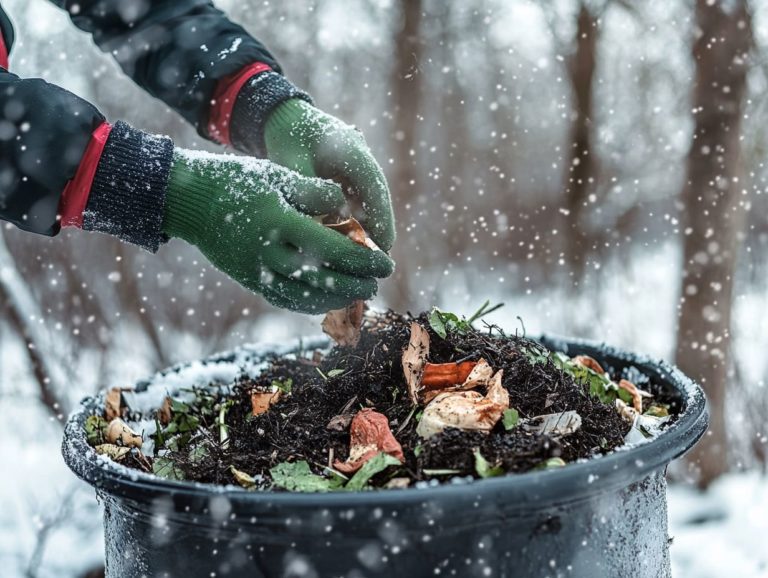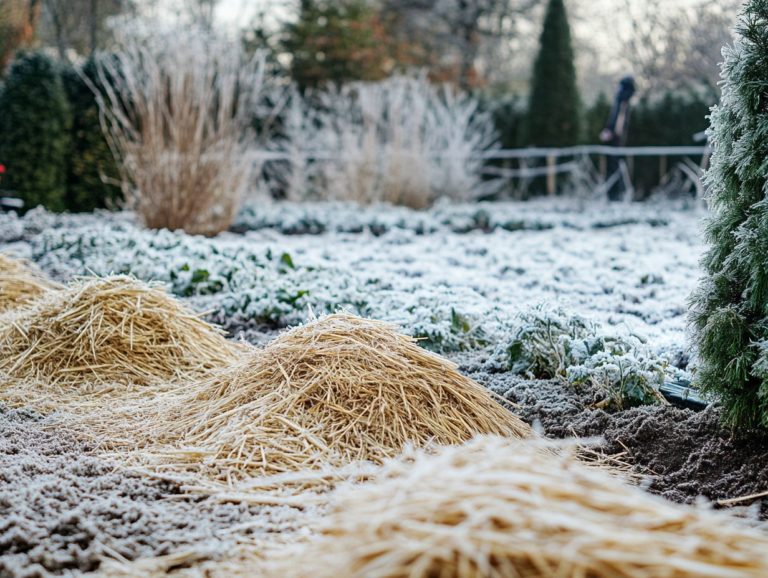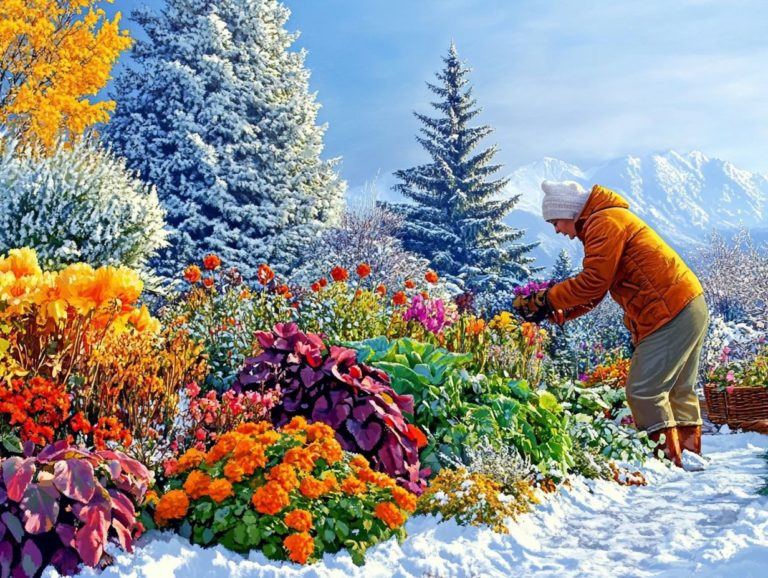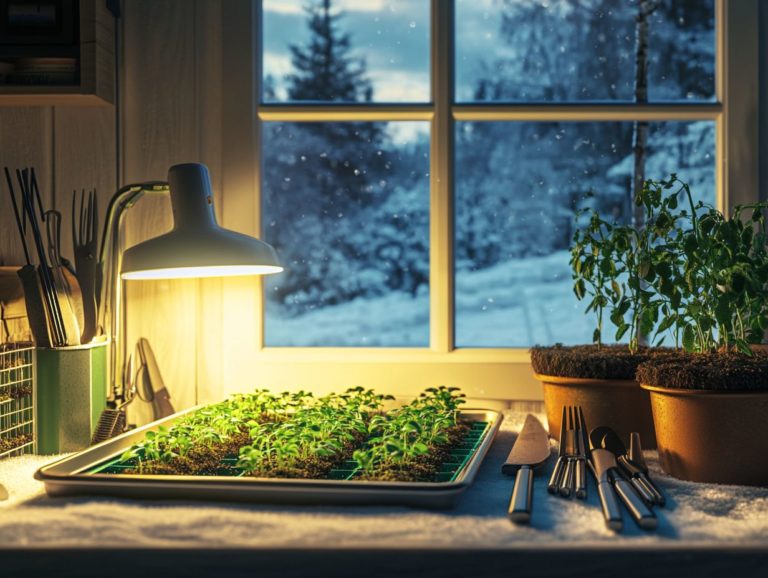What Resources are Available for Cold-Climate Gardeners?
Gardening in cold climates can be both a rewarding and challenging adventure. From understanding what defines a cold climate to navigating its unique obstacles, there s much to consider.
This article explores the common challenges you may face as a gardener, offering practical solutions and highlighting essential resources, such as cold-weather plants, tools, and techniques.
It also connects you with local and online communities designed to help you thrive in your gardening journey. Whether you re just starting out or are a seasoned pro, you’ll find tips that make your gardening experience successful and enjoyable.
Contents
- Key Takeaways:
- Challenges of Gardening in Cold Climates
- Essential Resources for Cold-Climate Gardeners
- Community Support for Cold-Climate Gardeners
- Frequently Asked Questions
- What resources are available for cold-climate gardeners?
- Are there any online forums specifically for cold-climate gardening?
- Can I find gardening books specifically for cold-climate gardening?
- How can joining a local gardening club benefit me as a cold-climate gardener?
- What about online resources for cold-climate gardening?
- Are there any government resources or programs for cold-climate gardeners?
Key Takeaways:
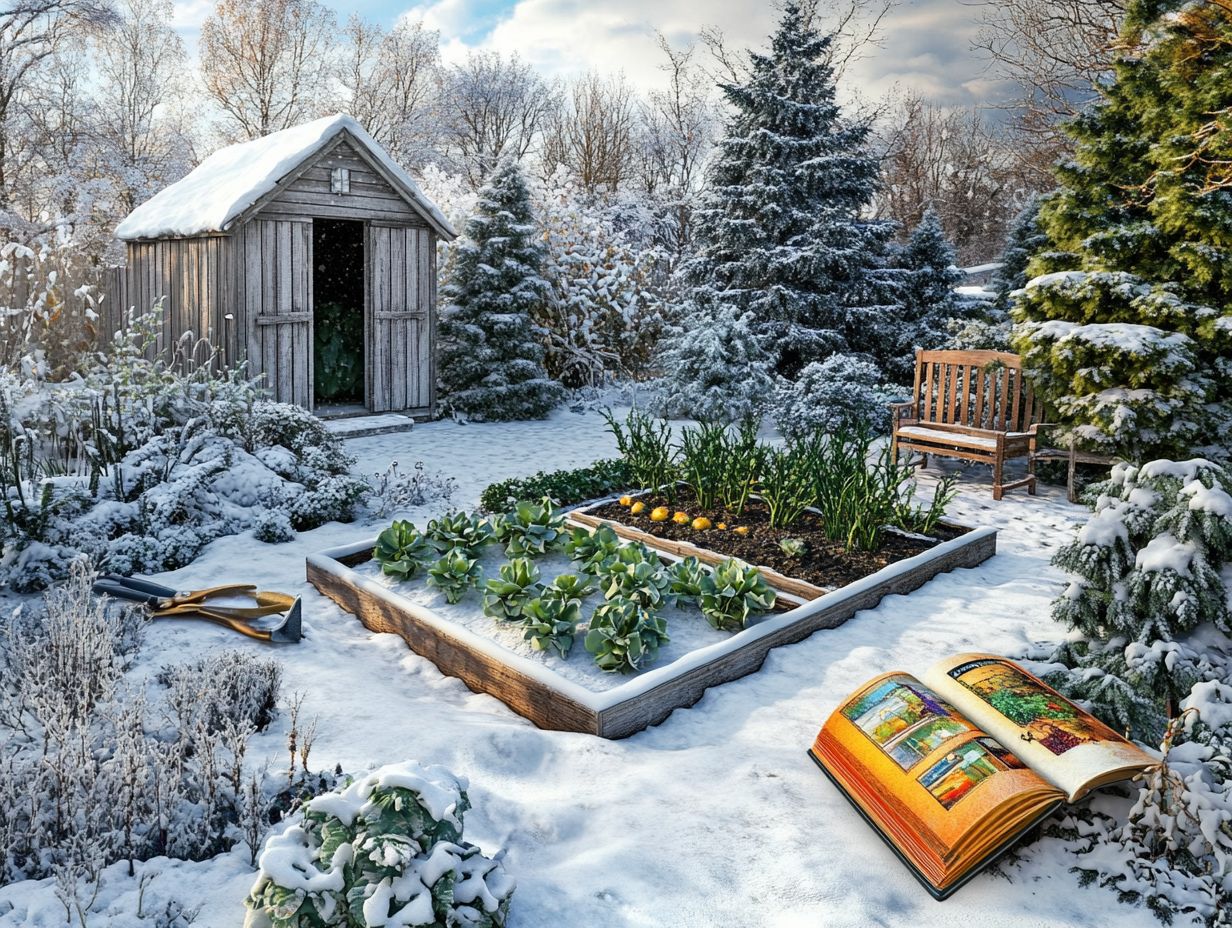
- Know your climate: Understanding what qualifies as a cold climate and how the plant hardiness system applies will help you prepare for unique gardening challenges.
- Stock up on resources: There are plenty of resources available to help you thrive as a cold-climate gardener, including cold-weather plants, seeds, and specialized tools.
- Connect with others: Joining local gardening groups and online forums can provide valuable support, tips, and a sense of community for those tending to their gardens in the cold.
What is Considered a Cold Climate?
Understanding what constitutes a cold climate is essential for your gardening success, especially if you live in areas like Wyoming or Alaska, where frost dates can dramatically alter planting schedules. Knowing your garden zone can help you make informed decisions.
Cold climates are generally categorized by USDA Plant Hardiness zones, a system that helps you know which plants can survive based on average annual minimum temperatures. This knowledge is key for selecting the right crops and varieties, ensuring your winter gardening flourishes and maximizing your growing season for vegetables like kale, carrots, and spinach.
In these regions, savvy gardeners often turn to historical frost data, microclimate details, and season extenders to fine-tune their planting schedules. For instance, knowing that the last frost date usually lands in mid-May enables you to start cold-tolerant seedlings indoors, paving the way for earlier harvests.
By using techniques like mulch and row covers, you can protect your plants from unexpected frosts and effectively extend your growing season. Being aware of your garden’s unique characteristics, such as sun exposure and wind patterns, improves your gardening practices.
Challenges of Gardening in Cold Climates
Gardening in cold climates presents intriguing challenges that require thoughtful planning and creative solutions. If you’re in places like Southeast Wyoming or North Idaho, you’ll need to navigate short growing seasons and unpredictable frost dates. Understanding the benefits of cold-climate gardening can help you make the most of your gardening efforts.
To thrive in these conditions, embracing effective gardening techniques is essential. Consider incorporating protective structures like cold frames and hoop houses into your strategy, and take the time to understand microclimates.
By doing so, you can nurture your plants year-round, ensuring your winter gardening efforts pay off.
To ensure you re ready for the growing season, start preparing your garden now! We encourage you to share your own gardening experiences or tips to enhance our community engagement.
Common Obstacles and Solutions
Gardeners in cold climates face unique challenges, like poor soil and short planting seasons, but don’t worry! Solutions are at hand. Cold climate gardeners often encounter obstacles such as poor soil conditions and limited planting windows, which can impede their efforts to create a flourishing garden. For more tips, check out the best cold-climate gardening podcasts to learn effective strategies. By testing your soil to check its nutrients, you can effectively amend your soil, creating optimal conditions for germination and growth.
Choosing heirloom seeds, which are traditional seeds passed down through generations that often yield flavorful vegetables, and planting hardy winter crops like spinach and kale can greatly enhance your yield, even in the harshest conditions.
You ll also need to tackle the challenge of pests that could thrive in an unpredictable climate, making pest management an essential component of your strategy. Embracing organic gardening practices, such as companion planting and introducing beneficial insects, allows you to minimize pest problems without resorting to harsh chemicals.
Implementing raised beds can extend your growing season by warming the soil more quickly in spring and shielding plants from nighttime frost. By combining these strategies, you can cultivate a thriving garden despite the many hurdles your environment may present.
Essential Resources for Cold-Climate Gardeners
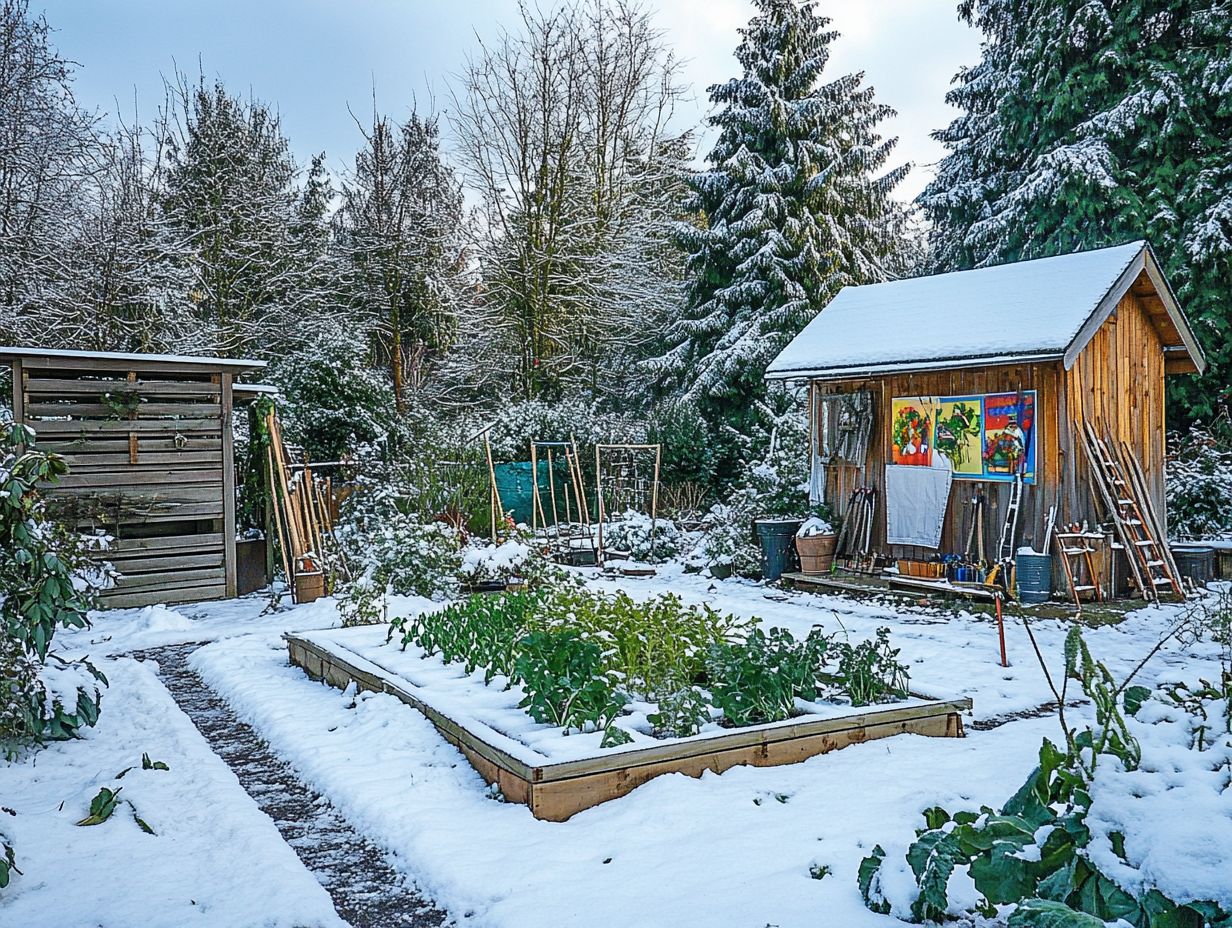
To truly thrive as a cold-climate gardener, you must harness a wealth of resources and expert insights tailored to the distinctive challenges of these regions. Use tools designed for cold-weather gardening, tap into the expertise of local gardening specialists for personalized guidance, and actively seek out community resources to deepen your knowledge and skills.
By doing so, you can elevate your gardening endeavors and maximize your success, even in the harshest climates, through sustainable gardening practices.
Cold-Weather Plants and Seeds
Selecting the right cold-weather plants and seeds is essential for cultivating a thriving garden in harsh climates. Heirloom varieties like leafy greens, carrots, and winter vegetables are particularly well-suited for the chill, while crops such as currant bushes and tree rows can enhance your garden’s yield and diversity.
Understanding the specific growing seasons for these plants is key, as many flourish in temperatures that dip below freezing. For example, root vegetables like parsnips and beets can be sown in late summer and harvested well into winter, offering not just exceptional flavor but also impressive yield potential.
Caring for your garden during the cold months involves choosing hardy varieties, applying mulch to insulate roots, and ensuring they receive adequate sunlight. Incorporating cover crops can also improve soil health, enabling you to maximize your harvests even in challenging conditions.
Tools and Equipment for Cold-Climate Gardening
Having the right tools and equipment is essential for successful cold-climate gardening, allowing you to navigate the challenges of harsh conditions with ease. Key items include:
- Cold frames, hoop houses, and other protective structures which create protective environments for your plants,
- Soil testing kits to ensure optimal growing conditions.
Investing in insulated planters can help you regulate soil temperature, while row covers offer a lightweight barrier against frost. A high-quality compost thermometer is invaluable for monitoring the internal heat of your compost piles, ensuring effective breakdown and nutrient availability.
If you re eager to extend your growing season, consider using thermal mass containers or water barrels. These can store heat during the day and release it at night, creating a more stable environment for your plants. Altogether, these tools and methods not only promote growth but also significantly boost your yields, making cold-climate gardening a more productive and rewarding endeavor.
Cold-Weather Gardening Techniques
Implementing effective cold-weather gardening techniques is essential for maximizing your yields in challenging climates. These methods can include using small areas with slightly different climates for optimal plant placement, employing season extenders, and focusing on winter harvest strategies that allow you to enjoy the fruits of your labor even when temperatures plummet.
By strategically positioning your plants in sheltered or sunnier spots, you can seize the opportunity of slight temperature changes that create more favorable growing conditions. For instance, placing cold-hardy vegetables like kale and carrots near south-facing walls can lead to earlier harvests.
Using cloches, cold frames, or hoop houses provides a crucial buffer against frost, significantly extending your growing season. Many gardeners report success in reaping fresh produce throughout the winter months by incorporating these techniques. This shows that flourishing gardens are possible even in less-than-ideal weather.
Community Support for Cold-Climate Gardeners
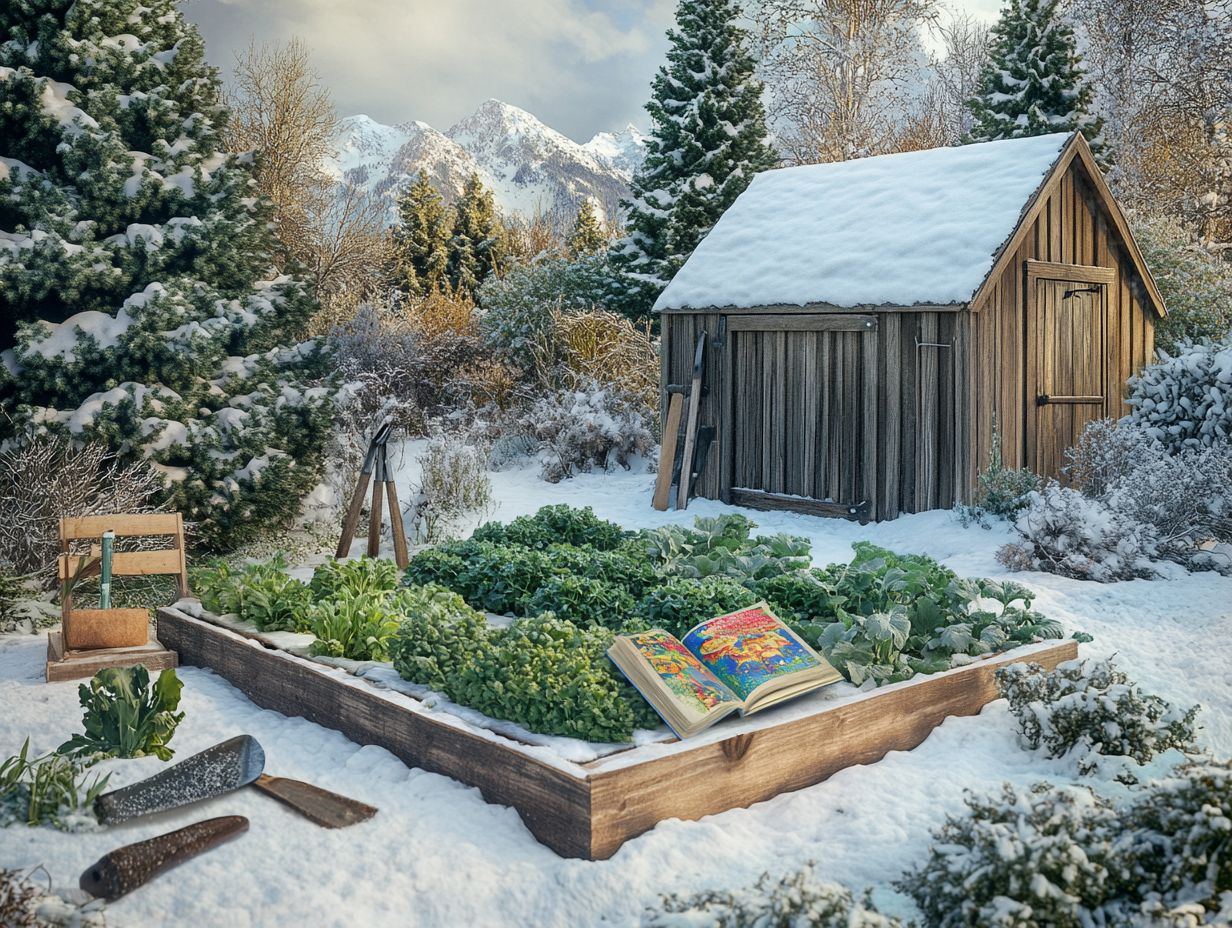
Community support is vital in cultivating successful gardening in cold climates. Exploring the best cold-climate gardening forums, along with local gardening groups and experts, offers invaluable resources and advice tailored for both novice and seasoned gardeners.
By engaging with these communities, you not only enhance your gardening knowledge but also open the door to collaboration and shared experiences. Building these connections transforms your gardening experience into an exciting adventure!
Local Gardening Groups and Clubs
Joining local gardening groups and clubs can truly elevate your gardening experience. These groups create a supportive environment where you can share knowledge and gain invaluable insights from fellow enthusiasts.
These groups often provide tailored gardening advice that aligns with local conditions, enabling you to tackle the distinctive challenges of cold-climate gardening.
For example, in places like Alaska, the Alaska Master Gardener Program offers specialized education and resources that address the realities of a short growing season. As a participant, you not only receive expert guidance but also connect with like-minded individuals, paving the way for collaborative projects and shared resources.
In Utah, the Utah Garden Club presents networking opportunities, workshops, and access to essential gardening tools. This enables members to face regional challenges together with greater ease.
Such collaborative efforts cultivate a sense of community and promote sustainable gardening practices, ultimately enriching your gardening journey.
Online Resources and Forums
Utilizing online resources and forums can be an invaluable way for you to connect with fellow cold-climate gardeners. These platforms offer a vibrant space for sharing experiences, advice, and solutions to the challenges of cold-climate gardening.
Websites dedicated to gardening burst with information, allowing you to expand your horticultural knowledge and tap into expert insights from around the world.
In these digital realms, you can delve into a variety of topics, from selecting the right plants to enhancing soil quality. You will receive timely tips tailored to your specific climate hurdles while engaging in discussions and asking questions. This fosters a sense of community, bridging the gap between local gardening clubs and global expertise.
Many platforms also host seasonal webinars and workshops designed to hone your practical skills. This helps you adapt your gardening practices to the nuances of your regional climate.
By weaving together these online resources with local advice, you can elevate your gardening success and forge connections with others who share your passion.
Tips for Success and Enjoyment
Succeeding in cold-climate gardening is all about using the right tips and practices, including knowing what tools are essential for cold-climate gardening. These will help you tackle the unique challenges of chilly regions.
Strategies like starting seeds indoors can boost your gardening success. Utilizing protective structures and selecting the right plant varieties can greatly enhance your gardening experience, ensuring you enjoy fresh produce throughout the year.
Many seasoned gardeners attest that by opting for hardier varieties think kale and root vegetables they can reap bountiful harvests even in harsh conditions. For example, one gardener transformed her limited growing season into a fruitful venture by constructing a simple cold frame, effectively extending her gardening layout from spring well into late fall.
Get ready to dive into a fulfilling hobby! With some planning, you can grow delicious vegetables and connect deeply with nature, even in winter’s chill.
Frequently Asked Questions
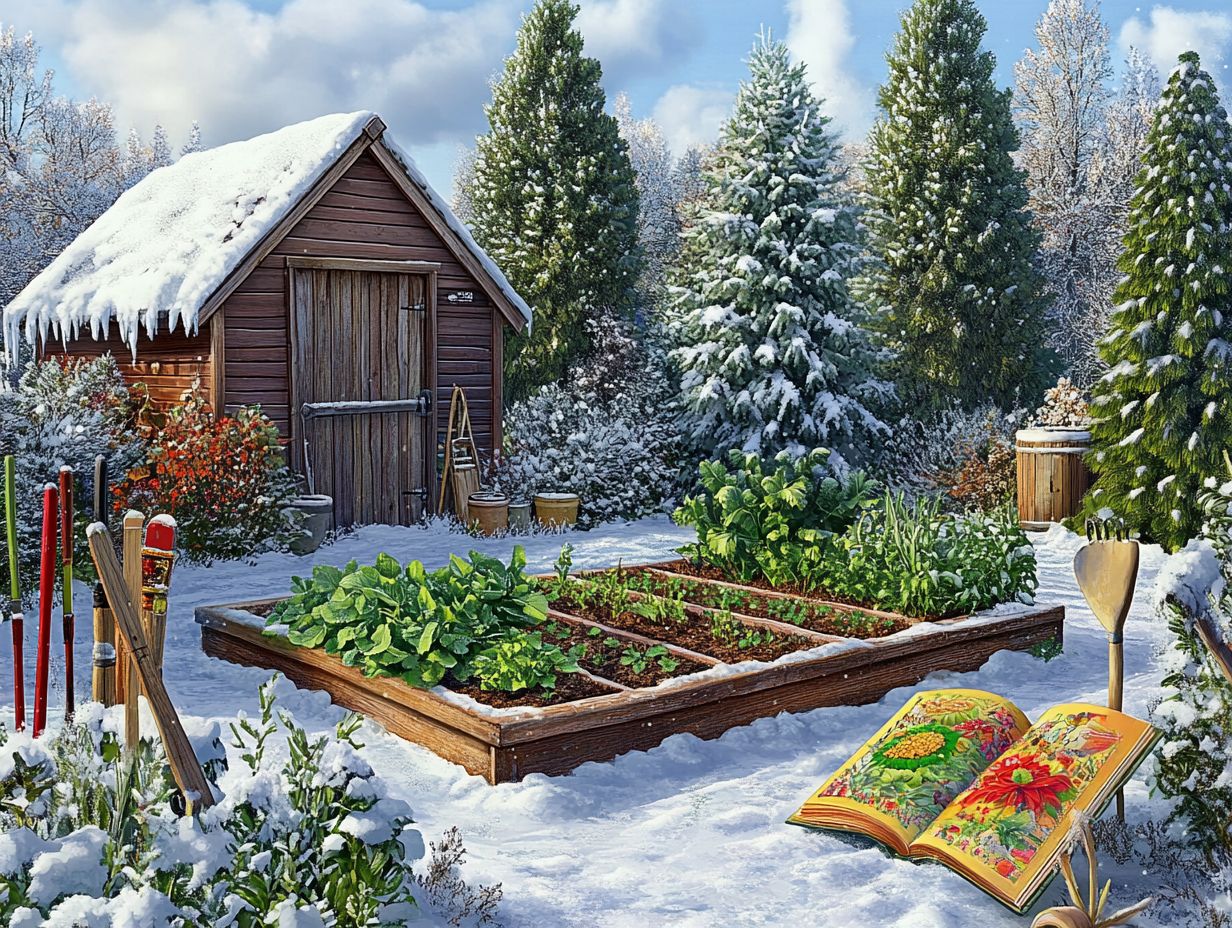
What resources are available for cold-climate gardeners?
Several helpful resources are available, including online forums, gardening books, and local gardening clubs.
Are there any online forums specifically for cold-climate gardening?
Absolutely! Many forums focus on cold-climate gardening, where you can find tips and advice.
Can I find gardening books specifically for cold-climate gardening?
Yes! Numerous books detail cold-climate gardening techniques and plants that thrive in colder temperatures, and you can also explore the best cold-climate gardening videos for visual guidance.
How can joining a local gardening club benefit me as a cold-climate gardener?
Joining a local gardening club connects you with other cold-climate gardeners and allows you to learn from their experiences. You may also access local resources and events that can help improve your gardening skills.
What about online resources for cold-climate gardening?
Many websites, blogs, and social media pages are dedicated to cold-climate gardening, offering valuable information, resources, and tips.
Are there any government resources or programs for cold-climate gardeners?
Yes, some government agencies offer resources and programs specifically for cold-climate gardeners. For detailed recommendations, you can also explore the best cold-climate gardening books. Check with your local extension office or agriculture department for more information.


